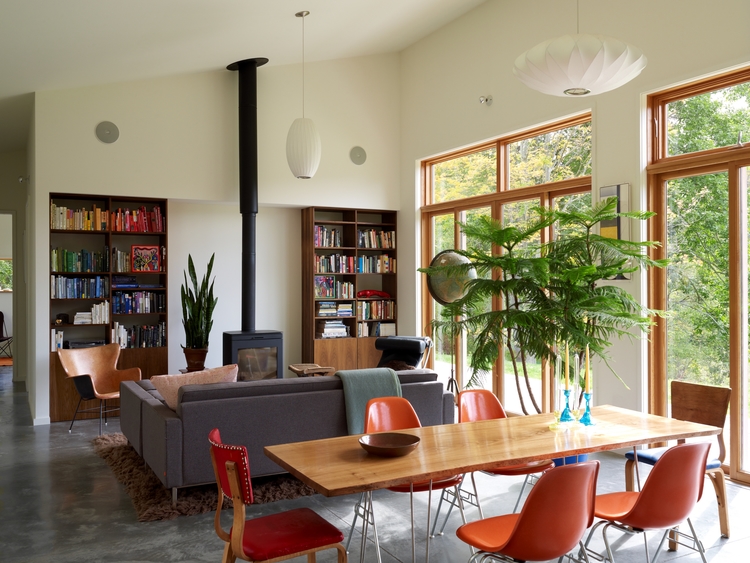The challenge: your dining room and living room share one large open living space so you naturally ask yourself how to best divide that space and create a harmonious connection between the two? Don’t fret! I have some guidelines that will help you create a cozy and functional living space.
1) Establish a Sense of Harmony
When you have a large room to decorate and you want to create distinct zones, yet maintain a natural flow between them, all elements need to combine seamlessly.
For starters, use the same flooring throughout the space to make it look larger.
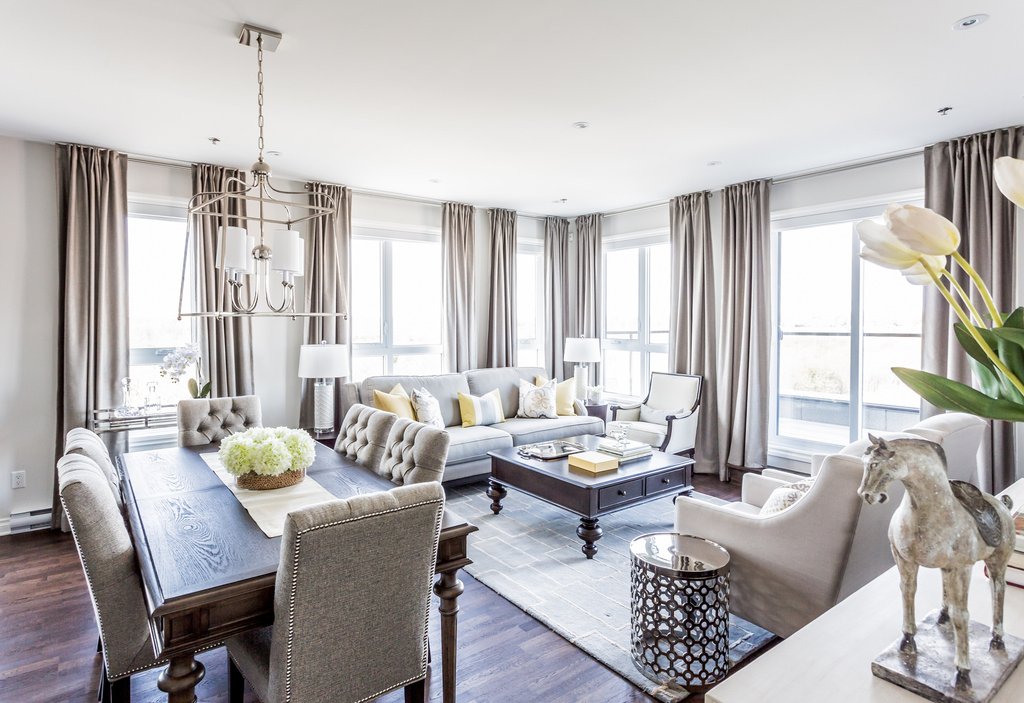 Source: Lux Decor
Source: Lux DecorThen, add to the consistency by painting the walls the same colour. Ideally, doors, trims and mouldings would be a different shade of that colour, but you can play it safe and paint them white or cream. Sometimes, an interesting architectural detail such as an alcove can be enhanced with an accent colour – that’s up to you.
For even greater harmony, consider your choice of materials – from the same type of wood on furniture, to similar window dressings, same fabric cover on the dining room chairs and accent pillows – these are all important details that will help create a unified look.
2) Proper Space Allocation
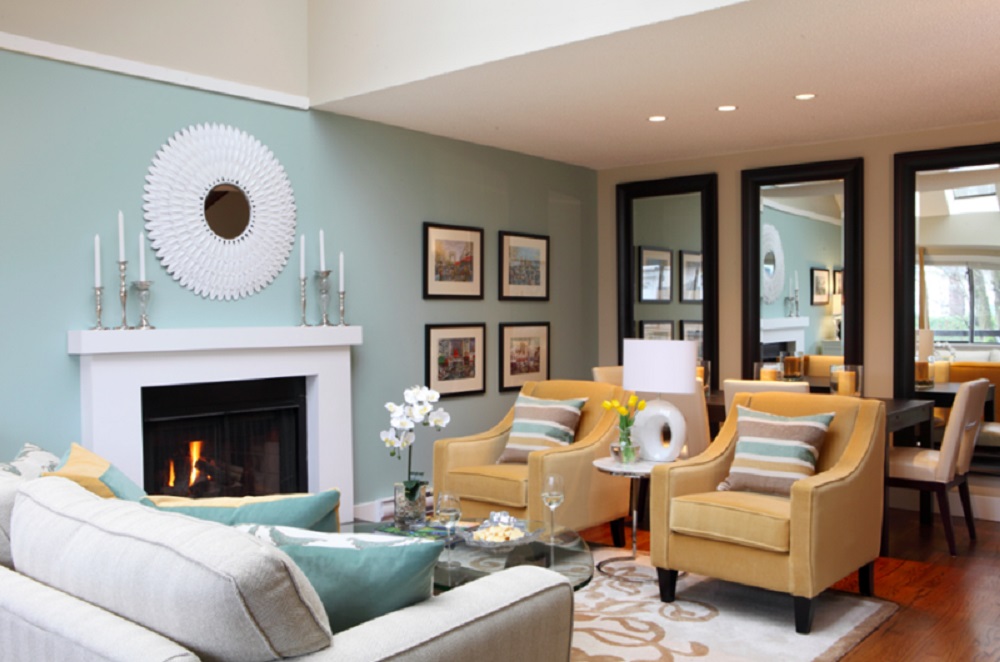 Source: Home Epiphany
Source: Home Epiphany
With an open space designed to host both the living and dining room, conventional wisdom suggests allocating 1/3 of the area to the dining room and 2/3 to the living room because, as the name suggests, we do most of our “living” there.
However, if you enjoy entertaining guests, you might find a 50/50 division more suitable to your lifestyle.
On the other hand, there is a growing trend for an open space that leaves out the dining room entirely; owners put the emphasis on the role of “living” and make do with the kitchen counter as the eating area.
In the end, it’s a personal choice so take the time to reflect on your lifestyle and allocate the size of the dining/living area accordingly.
3) Arranging Your Furniture
How you arrange the furniture will naturally depend on the shape of the room (rectangular, narrow, square, L-shaped, etc.), as well as the location of windows, doors, fireplace, and walkways.
Points one and two offer ways to create harmony and flow between living and dining areas within an open space, but we still need to establish distinct zones. Psychological divisions can help. Here are a few examples of layouts that can be used to divide your living space.
In the living room
Example 1
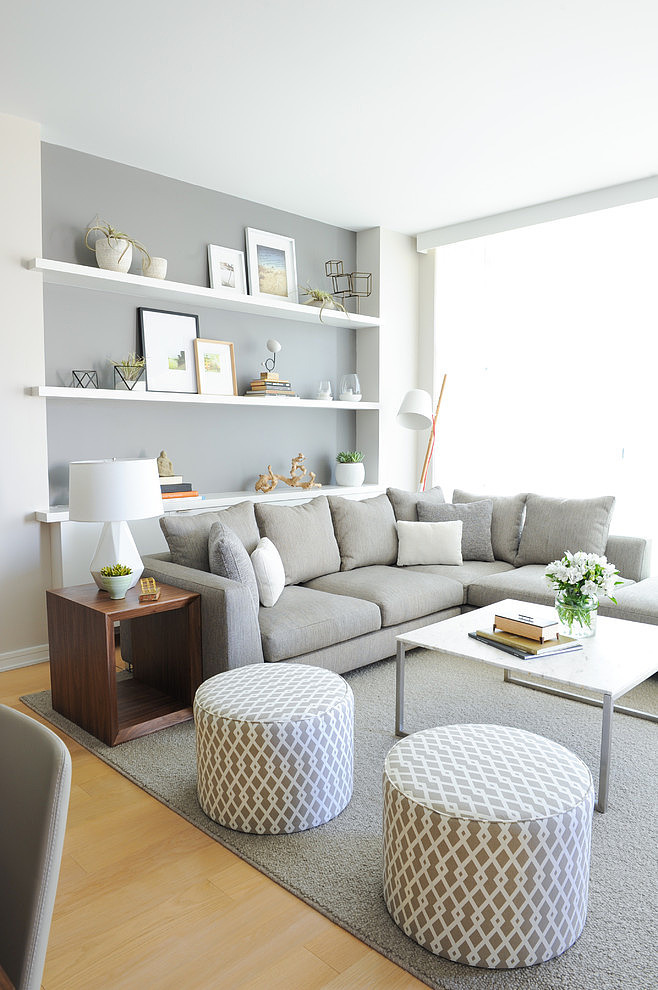 Source: Decoholic
Source: Decoholic
If you place the sofa against the longest wall of the room, you can then use one or two chairs or ottomans to create a visual partition. Add an area rug, a wall art or picture frames centered on the sofa to better define the space.
With this option, the sofa will most often face the entrance of the room and act as an invitation to relax and chat. As such, the sofa becomes the focal point of the living room.
Example 2
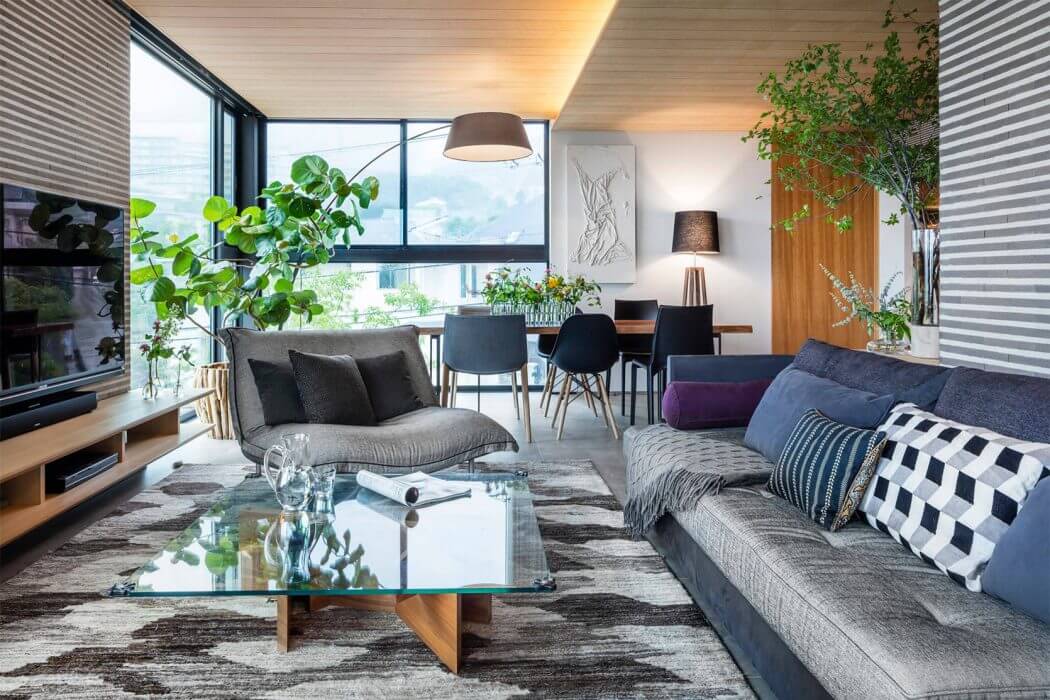 Source: Home Adore
Source: Home Adore
If you have a TV or a fireplace in the room, the sofa will most likely be placed in front of the television set or will be positioned underneath a window, perpendicular to the fireplace, facing the open space. In either instance, use accent chairs to add seats while keeping the open floor plan and lending a certain flair to your décor.
Example 3
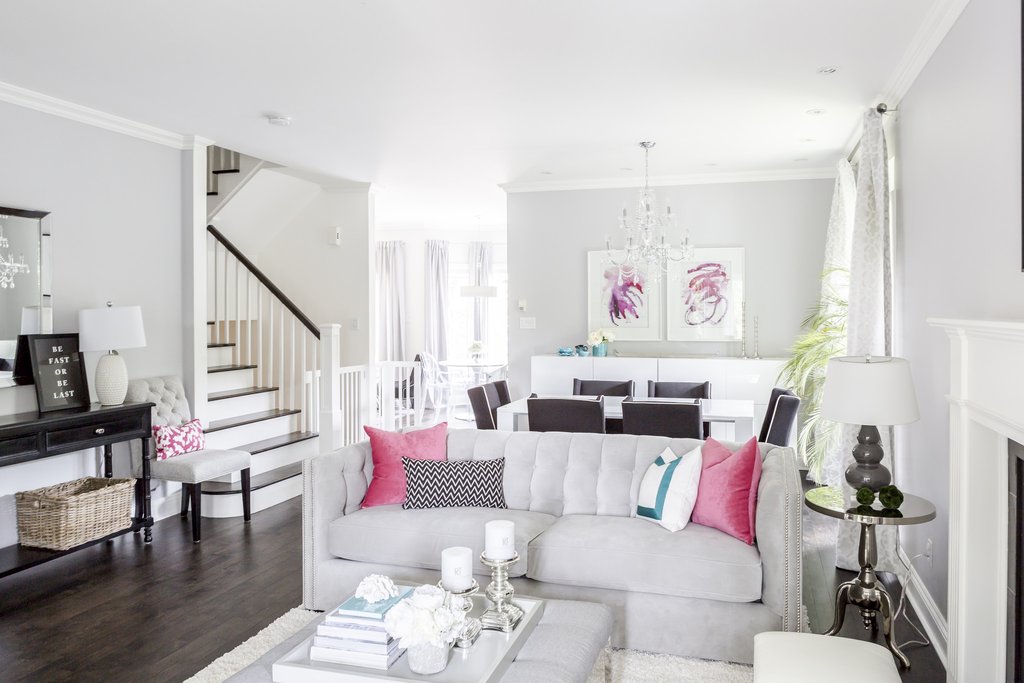 Source: Lux Decor
Source: Lux Decor
A sofa or sectional can also be used as a room divider between the living room and dining area. Garnish the back of the sofa with a console or low table that can serve as a sideboard when you are sharing a meal with guests or as extra storage.
 Source: Homepolish
Source: Homepolish
In the dining room
Example 1
If the space available is square, choose a square or round table to make it easier to move around. A mirror above a small shelf on the wall will draw the eye and will make the room seem larger. If you have enough space, add a small console table to add interest and additional storage to the room.
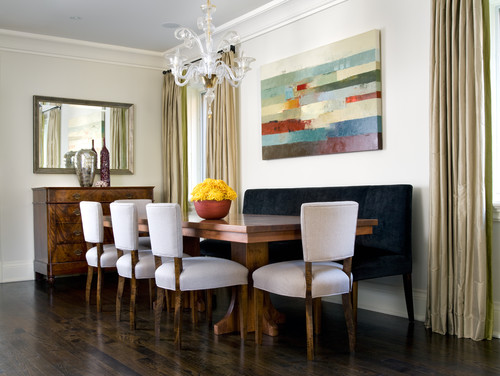
A rectangular-shaped area calls for a dining room table of a similar shape. If the room is rather narrow, you might want to replace the dining chairs with a bench or a banquette. This will allow you to bring the table closer to the wall. When you have friends over, simply pull the table away from the wall to make more space for your guests.
A square or round table can also be used in a rectangular room. Make the most of the space available by using a sideboard or a buffet to add extra storage and balance. Finally, before you go on a shopping spree, I suggest that you think about your lifestyle and make the main pieces your first buys.
Gradually, you can add accent furniture and accessories such as accent chairs, rugs, sideboards and other that will bring balance and charm to your open living space.
Patrick, Your Furniture Expert
Main image source: INC Architecture & Design PLLC

